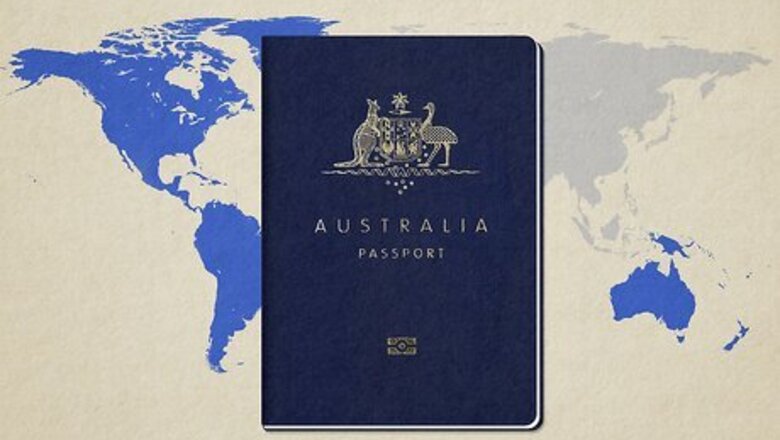
views
Blue Passport Meaning
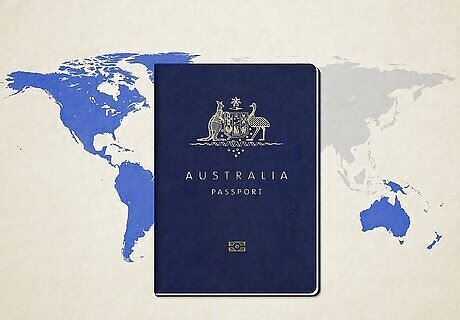
Blue is the dominant passport color in the Americas and some Asian countries. Blue passports have become associated with the “New World” and its political connotations, as well as a symbol of the contemporary world led by the United States’ influence. In South America, blue is also the color of choice for the regional economic bloc Mercosur (Mercado Común del Sur or the Southern Common Market). Some Middle Eastern and Asian countries also have blue passports, but share few economic or cultural ties with the Americas. Number of nations: 84 Nations with blue passports: Afghanistan, Antigua & Barbuda, Argentina, Armenia, Australia, Bahamas, Barbados, Belarus, Belize, Benin, Bhutan, Bosnia & Herzegovina, Botswana, Brazil, Burundi, Canada, Cape Verde, Congo (Democratic Republic), Costa Rica, Croatia, Cuba, Djibouti, Dominica, Dominican Republic, El Salvador, Eritrea, Eswatini, Fiji, Grenada, Guatemala, Guyana, Haiti, Honduras, Hong Kong, Iceland, India, Iraq, Israel, Jamaica, Jordan, Kazakhstan, Kenya, Kiribati, Kuwait, Kyrgyzstan, Laos, Lebanon, Libya, Liechtenstein, Marshall Islands, Mauritius, Micronesia, Mozambique, Nauru, Nicaragua, North Korea, Palau, Panama, Papua New Guinea, Paraguay, Rwanda, Saint Kitts & Nevis, Saint Lucia, Samoa, San Marino, Sao Tome & Principe, Somalia, South Korea, South Sudan, St. Vincent & The Grenadines, Sudan, Suriname, Syria, Tanzania, Tuvalu, Uganda, Ukraine, United Arab Emirates, United Kingdom, United States of America, Uruguay, Venezuela, Viet Nam, Yemen
Red Passport Meaning
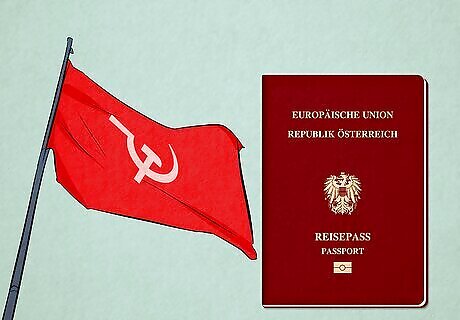
Most of the EU and some nations with communist history have red passports. All European Union (EU) nations except Croatia have burgundy passports, as do other countries hoping to join or work closely with the Union, like Albania or Türkiye. One semi-exception is Switzerland, which uses a bright red passport to reflect its flag. Red is also historically associated with communist ideals, and countries with ties to communism or that uphold socialist communist ideals, like China or the Russian Federation, have incorporated red into their passport cover designs. Red is also tied to Christianity and the Viking history of the Nordic nations. Number of nations: 68 Nations with red passports: Albania, Andorra, Austria, Bahrain, Belgium, Bolivia, Brunei, Bulgaria, Cambodia, Chile, China, Colombia, Cyprus, Czech Republic, Denmark, Ecuador, Equatorial Guinea, Estonia, Ethiopia, Finland, France, Georgia, Germany, Greece, Hungary, Iran, Ireland, Italy, Japan, Kosovo, Latvia, Lithuania, Luxembourg, Madagascar, Malaysia, Maldives, Malta, Moldova, Monaco, Mongolia, Montenegro, Myanmar, Nepal, Netherlands, North Macedonia, Norway, Oman, Peru, Philippines, Poland, Portugal, Qatar, Romania, Russian Federation, Senegal, Serbia, Seychelles, Singapore, Slovakia, Slovenia, Spain, Sri Lanka, Sweden, Switzerland, Thailand, Timor-Leste, Türkiye, Uzbekistan Fun fact: When the UK left the European Union in 2020, it switched its passport color from red to blue to reflect the political and economic shift.
Green Passport Meaning

Green passports are common in many Muslim and West African countries. For Muslims, green holds special significance—it’s associated with the religion of Islam and is the recognized favorite color of the prophet Muhammed. It’s also the color of choice for many nations in the Economic Community of West African States (ECOWAS). However, like with other passport colors, there are exceptions in both West Africa and Muslim countries. Number of nations: 40 Nations with green passports: Algeria, Azerbaijan, Bangladesh, Burkina Faso, Cameroon, Central African Republic, Chad, Comoros, Cote D’Ivoire, Egypt, Gabon, Gambia, Ghana, Guinea, Guinea-Bissau, Indonesia, Lesotho, Liberia, Macao, Mali, Mauritania, Mexico, Morocco, Namibia, Niger, Nigeria, Pakistan, Saudi Arabia, Sierra Leone, Solomon Islands, South Africa, Taiwan, Togo, Tonga, Tunisia, Turkmenistan, Vanuatu, Vatican City, Zambia, Zimbabwe
Black Passport Meaning

Black passports are the rarest and used primarily in some African nations. Black is an official and formal-looking color that hides wear and tear, making it a practical choice for a durable passport. It’s also one of the national colors of New Zealand and Trinidad & Tobago, which are regional outliers compared to the other African and Middle East/Central Asian nations on the list. Number of nations: 7 Nations with black passports: Angola, Congo, Malawi, New Zealand, Palestinian Territories, Tajikistan, Trinidad & Tobago
How do countries choose a passport color?
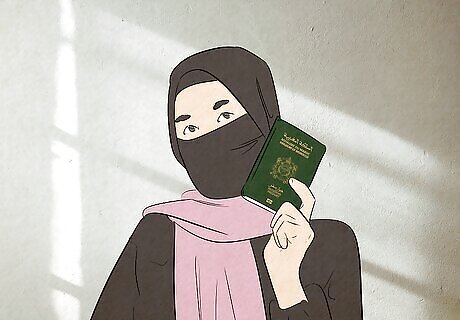
Countries choose passport colors based on cultural, political, or religious factors. The International Civil Aviation Organization (ICAO) provides recommendations on passport size, legibility, and font for ease of travel, but there is no universal guideline or authority that dictates what color a country’s passport should be—each nation is free to choose for themselves. When choosing a color, governments consider factors including: Political and economic ties. Member states of blocs like the EU, ECOWAS, and Mercosur share the same passport color, with some exceptions. Religious or historical factors. Green is an important color in Islam, reflected in their passport color. Red is also associated with Christianity and historically communist nations. Cultural significance. Some nations, like New Zealand, incorporate their national color into their passport design (in this case, black). Regional ties. Neighboring nations tend to adopt the same passport color. For example, most North and South American nations are blue, European countries are red, and many West African nations are green.
US Passport Colors & History
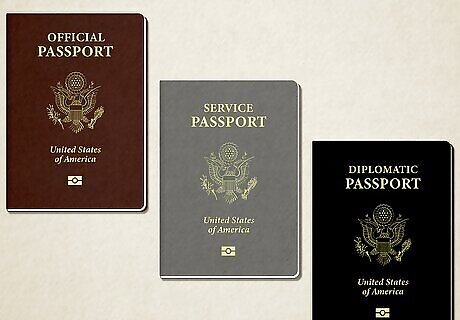
US government and military personnel have additional non-blue passports. Blue is the most commonly issued passport color in the US and is referred to as a tourist or “regular” passport—it’s the color an everyday citizen receives to travel abroad. However, not all US passport are blue. Black (diplomatic) passports are issued to Foreign Service Officers with diplomatic or comparable status. Maroon (official) passports are issued to government officials and employees who must travel internationally for official duties. They’re also given to military personnel when required by the country of destination. Gray (service) passports are given on a limited basis to third-party contractors traveling to support the US government whose travel cannot be accomplished using a regular passport.
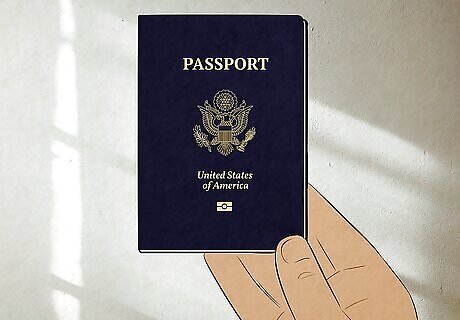
The US tourist passport hasn’t always been blue. In fact, the earliest US passports were simply letters or pieces of paper that could be issued by states, cities, notaries public, or the Department of State. In 1856, the Department of State became the sole issuer of US passports, but they often weren’t required to travel abroad except in times of war until 1920, when the aftermath of WWI made international travel a security risk and many European nations required them for entry. These paper passports weren’t meant to be durable. They were generally only valid for a single trip or for a few months, depending on when and why you got one. After WWI, the US began issuing passports with cardboard covers to make them more durable for international travel. The League of Nations standardized passport size, format, and layout throughout the 1920s. The US followed suit and eventually adopted a 28-page booklet with a green cover. In 1970, the passport color was changed to blue to celebrate the US’ bicentennial. In 1993, the passport was changed back to green to celebrate the bicentennial of the US Consular Service. In 1994 (just 1 year later), the passport was changed back to blue and has stayed blue ever since.
Applying for a US Passport

Adult US citizens can apply for their first passport at a passport acceptance facility. Unfortunately, you can’t apply for your first passport by mail or online (although most passport holders can renew theirs this way). To get your passport, you’ll need to prepare the following: A filled-out form DS-11 (do not sign until you’re at your appointment) Personal documents including proof of citizenship, your photo ID, and a copy of both documents A passport photo) A passport fee (currently $130 for the application, plus a $35 execution fee) Once you have all the required documents, schedule an appointment at a passport acceptance facility near you. You can locate a nearby facility with this search tool from the US Department of State.
Which passport is most powerful?

The most powerful passport is from the United Arab Emirates (UAE). The Passport Index ranks passports by their mobility score. Mobility scores are calculated by subtracting the number of nations that require a visa for entry from certain passport holders from the total number of nations with passports (198). The UAE has a mobility score of 179, meaning only 19 nations require UAE passport-holders to have a visa for entry. The least powerful passport is from Afghanistan, with a mobility score of 40. The US is ranked 8th with a mobility score of 170 (along with Cyprus and the United Kingdom). A passport’s color does not reflect its power. For example, both the UAE and Afghanistan have blue passports. However, a majority of passports in the top spots are red. Curious where your passport falls on the list? Find your country on the Passport Index’s Global Passport Power Rank 2025.



















Comments
0 comment